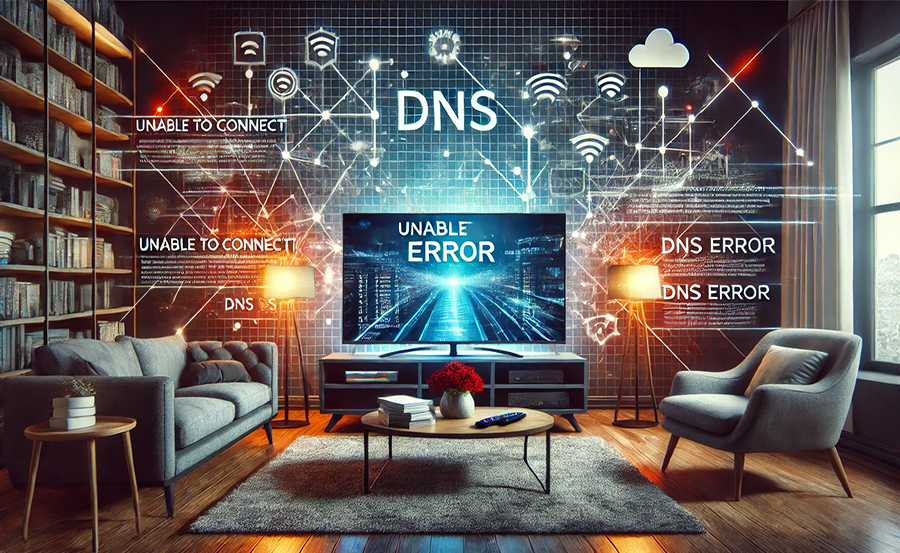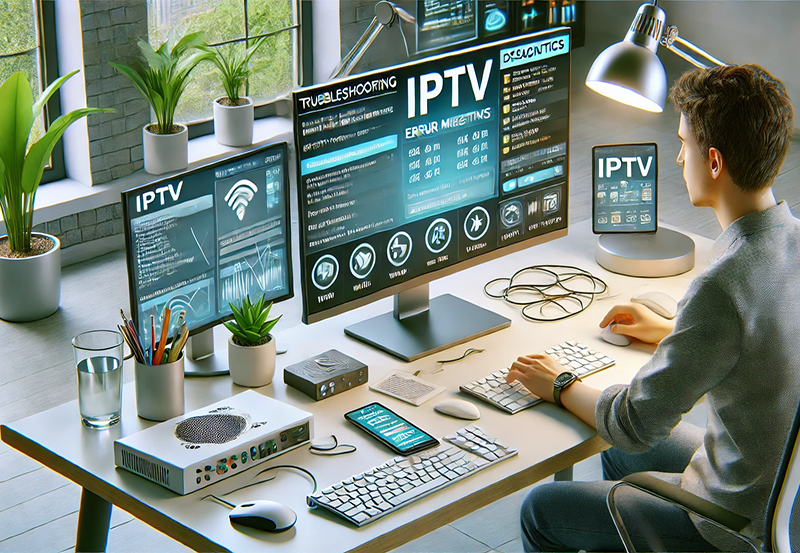Imagine settling in for a long-awaited movie night, your popcorn perfectly popped, only to be jolted by buffering and delays. For IPTV users, particularly those leveraging IPTV service for Firestick, such interruptions can be immensely frustrating. A key player in this disruption? DNS issues. But worry not, as we’ve assembled a comprehensive guide to help you navigate these digital waters smoothly, ensuring you maximize your streaming delight.
Understanding the Basics: What is DNS?
Before diving into the practical aspects of troubleshooting, it’s crucial to understand what DNS, or Domain Name System, is. At its core, DNS is like the phonebook of the internet. When you input a website address into your Firestick or any device, DNS translates that familiar site name into an IP address that your device can understand and connect to.
It would be astonishing to learn just how many digital hiccups can be traced back to something as seemingly insignificant as a DNS error. For IPTV users, this understanding forms the backbone of troubleshooting efforts.
Quick Tip:
Never miss a live event again! Subscribe to Affordable IPTV services for sports enthusiasts worldwide.
Why DNS Matters for IPTV Users
The journey from subscribing to a viable IPTV subscription plan to a flawless viewing experience is intricately connected to DNS performance. With suboptimal DNS settings, users may experience:
- Inconsistent streaming speeds
- Increased buffering times
- Service interruptions during high-traffic periods
Getting the DNS settings right ensures a smoother streaming experience, helping you get the most from your IPTV service for Firestick.
Identifying DNS Issues: Signs to Watch For
Spotting DNS-related issues early on is key to minimizing frustration. Some tell-tale signs include:
- Slow loading times for channels and programs
- Sudden drops in picture quality
- Channels not loading at all, even when other internet services work
Understanding these symptoms is the first step toward effective troubleshooting.
Tools and Resources for Diagnosis
Several tools can assist in diagnosing DNS problems. Versatile utilities like DNS Benchmark and Namebench can provide insights into current settings. These programs test the speed of different DNS servers, highlighting which may provide better performance for your IPTV.
By incorporating these tools into your diagnostic approach, you’re better positioned to tailor IPTV settings for optimal streaming performance.
Leveraging Built-In Device Features
Did you know that many devices, such as Amazon’s Firestick, have diagnostic tools built-in? Under ‘Settings,’ navigate to ‘Network’ and take advantage of options that let you verify internet speeds and current DNS performance. This preliminary check can quickly point you in the right direction.
Practical Steps to Resolve DNS Problems
Once a potential DNS issue is identified, the next step involves applying practical solutions to rectify it. Here’s a straightforward approach:
Step 1: Reset Your DNS Settings
A simple yet effective first step is to reset your DNS settings. This action often resolves temporary glitches and can be performed through your device settings. Here’s how:
- Go to ‘Settings’ on your Firestick
- Select ‘Network’ and choose your Wi-Fi network
- Click ‘Forget Network,’ then reconnect, prompting a DNS reset
After this, test your IPTV service again to check if the issue persists.
Step 2: Change to a Reliable DNS Server
If resetting doesn’t yield results, consider switching to a well-known, reliable DNS server. Public DNS servers like Google DNS (8.8.8.8, 8.8.4.4) and Cloudflare DNS (1.1.1.1) often outperform ISP-provided DNS configurations. Here’s how to make the change:
- In Firestick, go to ‘Settings’ > ‘Network’
- Select the Wi-Fi network and click ‘Advanced Options’
- Input a reliable DNS server address
Testing the New Setup
Re-testing your IPTV service after switching DNS settings is essential. Watch for improvements in channel loading times and streaming quality as indicators of success. If issues persist, revisit your DNS choices or consult further technical resources.
Frequently Overlooked DNS Strategies for IPTV Optimization
Beyond basic fixes, several overlooked strategies can further optimize your DNS settings specifically for IPTV usage:
Caching and Pre-fetching Techniques
Advanced techniques like DNS caching and pre-fetching can significantly reduce the time it takes for channels to load. To employ these methods, ensure your router and devices are set to retain frequently accessed DNS queries, minimizing repeated lookups.
Ensuring Regular Software Updates
Software updates can impact DNS performance. Both your device’s firmware and the router’s software should be updated regularly to support the best DNS resolution practices. Regular updates also patch known vulnerabilities that might affect streaming quality.
Understanding ISP Limitations
Your ISP can impact DNS performance, and not always positively. Some ISPs implement DNS filtering, which may affect streaming access. Switching between various ISPs’ DNS configurations can help identify which offers the best service continuity.
The Role of VPNs in DNS Management
Utilizing a VPN with dedicated DNS services can help you bypass throttling and geo-restrictions imposed by ISPs. By routing your queries through a secure VPN, you might find significant performance improvements when using your IPTV subscription plans across a range of devices, including Firestick.
The Human Element in Tech Troubleshooting
At the heart of every technical issue is the human problem solver, patiently weaving through settings, configurations, and potential hacks. While it’s easy to get lost in the intricacies of DNS troubleshooting, remember that persistence often leads to success. It’s akin to piecing together a digital puzzle, where each resolved issue brings the satisfaction of clearer and better streaming.
Moreover, understanding that occasional setbacks are par for the course can instill patience, a virtue as valuable as any technical skill in this arena.
Bringing It All Together
By demystifying DNS troubleshooting for IPTV users, we hope to empower you to tame those digital disruptions that threaten your streaming sessions. Armed with the right tools, techniques, and know-how, you’re positioned to enjoy seamless streaming, making the most of your IPTV subscription plans and maximizing your streaming delight.
Your digital toolkit is now more robust, your confidence boosted—and those once-baaffling DNS woes, a thing of the past. So go forth, and let no buffering stand in the way of your entertainment pursuits.
FAQ: Common Queries About DNS and IPTV

- What exactly does changing my DNS settings do?Changing your DNS settings can optimize the path your requests take to connect to IPTV servers, improving speed and reliability.
- Can changing DNS help reduce buffering?Yes, optimizing your DNS settings can lead to faster loading times and reduced buffering, enhancing streaming quality.
- Is switching to a public DNS server always beneficial?While generally beneficial for many users, it’s essential to test performance as it can vary based on location and individual ISP restrictions.
- Why does my IPTV service work better with a VPN?A VPN can circumvent ISP throttling and geo-restrictions, leading to more consistent streaming quality by safeguarding your DNS queries.
- How often should I update my DNS settings?Regular updates aren’t necessary unless you notice performance issues, as DNS servers don’t change frequently. However, regular checks can ensure optimal performance.
Expert Tips for Navigating XMLTV Data Corruption in IPTV Apps




